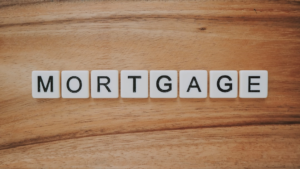
Navigating the complexities of buying a home can be daunting, especially when it comes to understanding mortgages. A critical tool in this journey is a mortgage calculator, offering prospective homeowners a powerful means to plan and manage their finances effectively. Utilizing a mortgage calculator not only provides clarity on monthly payments, interest rates, and loan terms but also empowers buyers to make informed decisions about their future home purchase. This digital tool’s importance cannot be overstated, as it translates the intricate details of mortgages into comprehensible figures, setting the stage for a smoother home buying experience.
The article will delve into what a mortgage entails, types of mortgages available, the step-by-step mortgage process, and factors that influence mortgage rates. Each section is designed to demystify the mortgage landscape, providing readers with the knowledge needed to navigate their home buying journey with confidence. By utilizing a mortgage calculator, prospective buyers can anticipate their financial commitments, explore different mortgage options, and ultimately, plan their home purchase with a solid financial footing. This roadmap will guide readers through the critical aspects of using a mortgage calculator as an indispensable tool for planning a home purchase.
What is a Mortgage?
A mortgage is a specific type of loan used for purchasing real estate, typically secured by the property itself, which serves as collateral 1. This arrangement allows the borrower, often referred to as the mortgagor, to repay the loan amount along with interest over a predetermined period. Mortgages are crucial for most home buyers since they enable the borrowing of significant amounts, often hundreds of thousands of dollars, which can be repaid at a relatively low interest rate over an extended time 2.
The principal of a mortgage is the initial amount borrowed from a lender to pay for the home before any interest accrues 3. Over the life of the mortgage, the borrower also pays interest, which is the cost of borrowing the principal amount, typically expressed as an annual percentage rate (APR). The APR includes not just the interest rate but also other costs such as broker fees and closing costs, making it higher than the basic interest rate 3.
Mortgage points, which include origination points and discount points, can also affect the total cost of a mortgage. These points are upfront fees paid to the lender to reduce the interest rate of the loan, where one point is equal to 1% of the total loan amount 3.
Furthermore, if the down payment is less than 20% of the home’s purchase price, the borrower might need to obtain private mortgage insurance (PMI), which protects the lender in case the borrower fails to make mortgage payments 3.
The process of amortization involves repaying the mortgage in regular installments over the loan period. An amortization schedule provided by the lender outlines how each payment is split between the principal and interest 3.
In summary, understanding these components—the principal, interest, APR, mortgage points, PMI, and amortization—is essential for any prospective homebuyer using a mortgage to finance their home purchase.
Types of Mortgages
Fixed-Rate Mortgages
Fixed-rate mortgages offer stability as the interest rate remains unchanged throughout the loan’s term, ensuring predictable monthly payments. This predictability aids in easier budgeting and financial planning. Fixed-rate mortgages shield borrowers from potential increases in interest rates, which can significantly affect monthly payments 4.
Adjustable-Rate Mortgages (ARMs)
Adjustable-rate mortgages start with a lower interest rate compared to fixed-rate mortgages, making initial monthly payments more affordable. However, the interest rate on ARMs can change over time based on market conditions, which means monthly payments can increase or decrease. ARMs typically include caps that limit how much the interest rate can change during a specific period and over the life of the loan 5.
Interest-Only Loans
Interest-only loans allow borrowers to pay only the interest on the mortgage for a set period, usually 5 to 10 years. After this period, the borrower starts paying both interest and principal, which increases the monthly payments. These loans can be beneficial for individuals who expect higher future earnings but pose risks as they do not build equity during the interest-only period 6.
Reverse Mortgages
Reverse mortgages are designed for homeowners aged 62 or older, allowing them to convert part of their home equity into cash without needing to make monthly mortgage payments. The loan is repaid when the homeowner moves, sells the home, or passes away. While providing financial relief, reverse mortgages come with fees and can affect eligibility for certain government benefits 7 8.
The Mortgage Process
Application and Approval
The mortgage process begins with assessing one’s financial readiness and obtaining a mortgage preapproval, which indicates the amount a lender is willing to lend based on one’s financial background 9 10. Prospective homeowners should verify their home buying eligibility and get matched with a lender to start the preapproval process 9. This step is crucial as it sets realistic expectations for house hunting and choosing a mortgage loan 9.
Underwriting
Once the application is submitted, it enters the underwriting phase where mortgage underwriters evaluate the risk associated with lending 11 12 13 14. They examine credit history, income, assets, and the property details to ensure the borrower can repay the loan 12 13. This stage may involve manual or automated processes to assess the borrower’s creditworthiness and the property’s value 12.
Closing the Loan
Closing, also known as settlement, is when the final documents are signed, and the ownership of the home is transferred 15 16 17. The process involves multiple parties and can vary by state; some may require all parties to sign documents at once, while others collect signatures separately 15. It’s essential for buyers to understand the financial implications of the documents they are signing, including adjustments to payments in cases of adjustable-rate mortgages 15.
Mortgage Options
Different mortgage options cater to varying needs of borrowers. Fixed-rate mortgages offer predictable payments, while adjustable-rate mortgages might start with lower rates but can fluctuate 16. Interest-only loans offer low initial payments, which could increase significantly later 16. Reverse mortgages, suitable for older homeowners, allow converting home equity into cash without monthly payments 16. Each option has distinct advantages and considerations, impacting the overall mortgage process and the borrower’s financial planning 16.
Factors Affecting Mortgage Rates
Credit Score
A higher credit score often results in obtaining lower mortgage rates, as lenders gauge the borrower’s likelihood of repaying the loan based on their credit history. Borrowers with credit scores deemed excellent, typically 670 and above, are offered better rates and more favorable loan terms 18 19 20 21 18 22.
Loan Type
The type of mortgage loan chosen can significantly affect the interest rates. Government-backed loans such as FHA, VA, and USDA often come with lower rates due to government guarantees that reduce lender risks. Conversely, conventional loans and jumbo mortgages might carry higher rates depending on borrower eligibility and the loan size 18 19 20 18.
Down Payment
The size of the down payment influences the loan-to-value (LTV) ratio, with a higher down payment generally resulting in a lower LTV ratio and, consequently, lower interest rates. A down payment of 20% or more typically avoids the need for private mortgage insurance (PMI), further reducing the cost of the mortgage 18 19 23 24 25.
Market Conditions
Mortgage rates are also affected by broader economic factors including inflation, bond yields, and general economic growth. For instance, higher inflation generally leads to higher mortgage rates. Additionally, the performance of mortgage-backed securities and the 10-year Treasury bond yield are closely watched indicators that influence mortgage rates. Changes in these market conditions can cause fluctuations in mortgage rates, impacting the cost of borrowing for home purchases 18 21 18 22.
Conclusion
Throughout this exploration into the realm of mortgages, we’ve embarked on a comprehensive journey, unraveling the intricacies of mortgage calculators, the essence and types of mortgages, the methodical steps of the mortgage process, and the critical factors influencing mortgage rates. Whether dissecting the components of fixed and adjustable-rate mortgages or deciphering the complexities of mortgage approval and closure, the article has aimed to equip prospective homeowners with the knowledge to navigate the housing market confidently. The pivotal role of mortgage calculators in facilitating informed decisions about home purchases underscores the importance of understanding one’s financial commitments and options.
In essence, the path to homeownership is intricate, marked by an array of decisions from choosing the right mortgage type to accurately calculating potential payments. The insights provided serve not only to guide but also to inspire further exploration and preparedness among potential buyers. It’s clear that a deeper understanding of mortgages can significantly enhance one’s strategy in the home buying process, ultimately leading to more sound and informed decisions. As the real estate landscape evolves, so too should the strategies of those seeking to navigate it, underscoring the ongoing need for financial education and planning in achieving one’s home buying aspirations.
FAQs
1. What is the monthly payment for a $70,000 mortgage?
For a $70,000 mortgage, the average monthly payment would be approximately $409. This estimate is based on a 25-year capital repayment mortgage with an interest rate of 5%, reflecting recent conditions in the UK market as of June 2024.
2. Can you explain the 28/36 rule in mortgage planning?
The 28/36 rule is a guideline suggesting that no more than 28% of your gross monthly income should be spent on housing expenses, and total debt payments should not exceed 36%. Housing expenses include your mortgage payment, homeowners insurance, and private mortgage insurance.
3. What price range of a house can I afford with a monthly budget of $1500 for mortgage payments?
With a monthly mortgage budget of $1500, assuming a 6% down payment and a 7.69% interest rate on a 30-year fixed mortgage, you could afford a home priced around $225,000.
4. What is the price range of homes I can afford on a $36,000 annual salary?
On an annual income of $36,000, you can afford to purchase a home valued between $100,000 and $110,000. This estimate assumes a monthly payment of just over $1,000 and no significant existing debts or substantial down payment savings.
References [1] – https://convoyhomeloans.com/blog/understanding-mortgage-basics-a-first-time-buyers-guide
[2] – https://themortgagereports.com/19098/what-is-a-mortgage-and-how-does-it-work
[3] – https://yourhome.fanniemae.com/buy/understanding-home-loan-basics
[4] – https://www.investopedia.com/mortgage/mortgage-rates/fixed-versus-adjustable-rate/
[5] – https://www.consumerfinance.gov/ask-cfpb/what-is-the-difference-between-a-fixed-rate-and-adjustable-rate-mortgage-arm-loan-en-100/
[6] – https://www.investopedia.com/articles/managing-wealth/042516/how-interestonly-mortgages-work.asp
[7] – https://www.bankrate.com/mortgages/reverse-mortgage-pros-and-cons/
[8] – https://reverse.mortgage/pros-cons
[9] – https://themortgagereports.com/65881/mortgage-loan-process-explained-in-9-steps
[10] – https://www.rocketmortgage.com/learn/mortgage-loan-process




